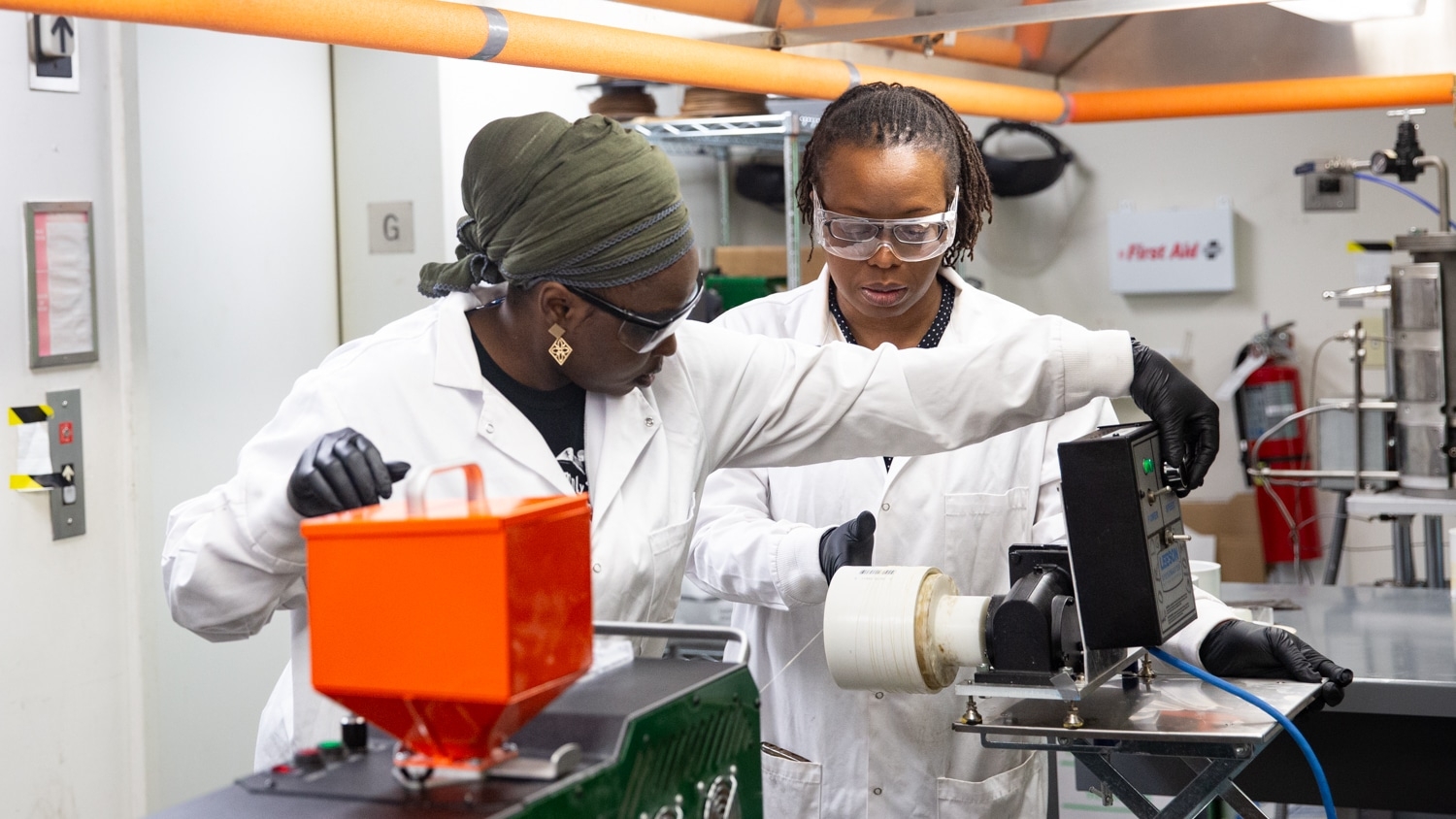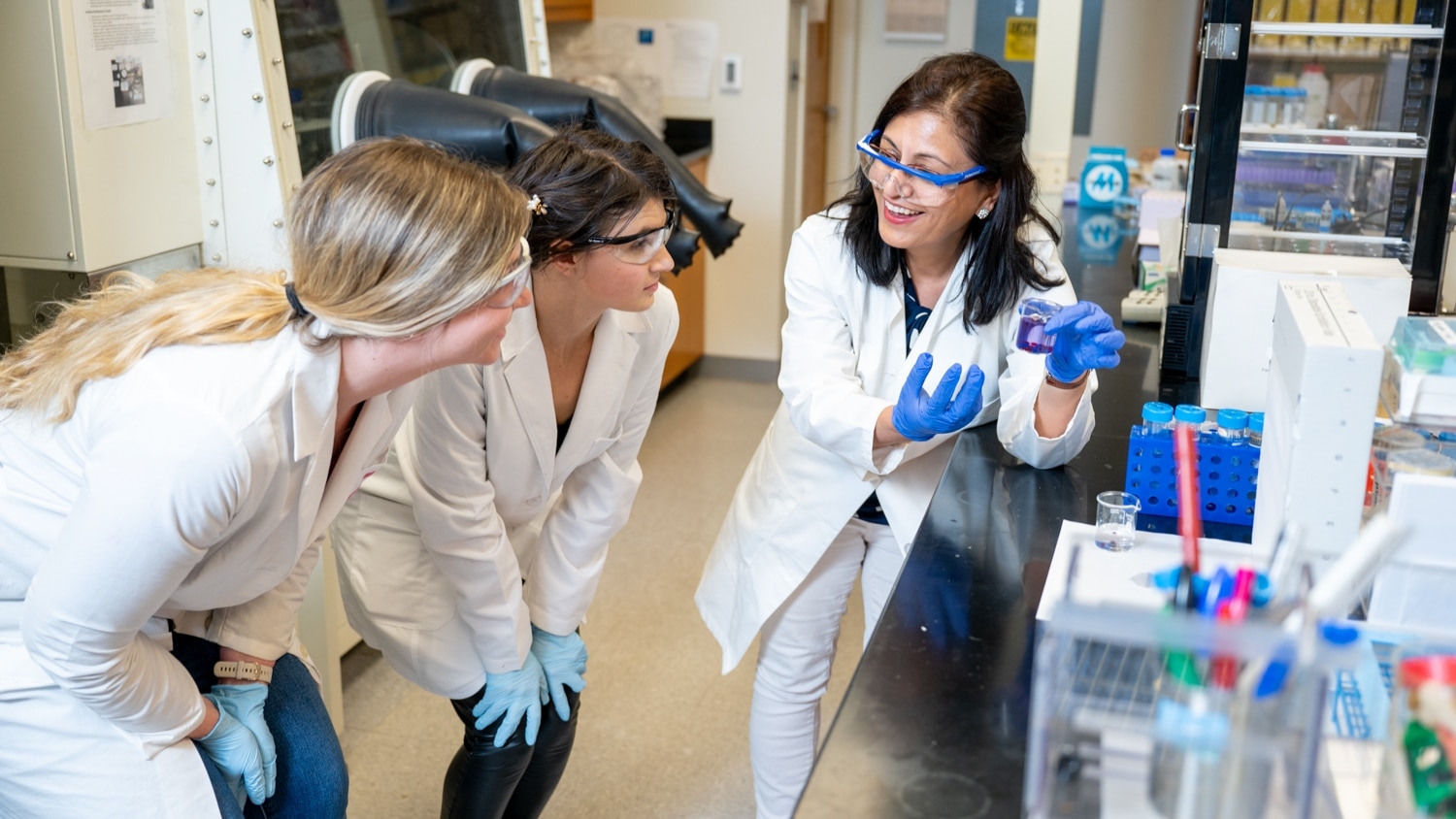Adding a little spring to your step

Researchers in the College have worked with colleagues at Carnegie Mellon University to create an unpowered exoskeleton that adds an extra spring to each step a person takes and modifies the structure of their ankles.
These findings may benefit both able-bodied people who are frequently on their feet – think of the military infantry or athletic baby-boomers – as well as those who have been victims of stroke or who have other gait impairments.
Use of this device can also result in a reduction of metabolic energy consumption by 7 percent compared to walking in normal athletic shoes.
To gain an advantage over nature, researchers tested the efficacy of a lightweight lower-leg device that uses a spring and clutch system working in tandem with calf muscles and the Achilles’ tendon while people walk. The streamlined, carbon-fiber device weighs about as much as a normal loafer – 500 grams, or a bit more than a pound – and is not motorized, so it requires no energy from batteries or an external fuel source.

“The unpowered exoskeleton is similar to a catapult. It has a spring that mimics the action of your Achilles’ tendon, and works in parallel with your calf muscles to reduce the load placed upon them,” said Dr. Gregory Sawicki, associate professor in the Joint NC State/UNC Department of Biomedical Engineering. “The clutch is essential to engage the spring only while the foot is on the ground, allowing it to store and then release elastic energy. Later, it automatically disengages to allow free motion while the foot is in the air.”
The study participants, nine able-bodied adults, strapped the exoskeleton devices on both legs and walked at a normal speed on a treadmill after completing some practice training. The same subjects also walked without exoskeletons for a baseline comparison.
The researchers tested exoskeletons with springs that varied in stiffness. Like Baby Bear’s bed in the Goldilocks story, the spring that provided the most benefit was moderately stiff. Walking with exoskeletons with springs that were too stiff or too compliant resulted in normal or higher-than-normal energy costs for participants.
“A 7 percent reduction in energy cost is like taking off a 10-pound backpack, which is significant,” Sawicki said. “Though it’s surprising that we were able to achieve this advantage over a system strongly shaped by evolution, this study shows that there’s still a lot to learn about human biomechanics and a seemingly simple behavior like walking.”
Return to contents or download the Fall/Winter 2015 NC State Engineering magazine.
- Categories:


